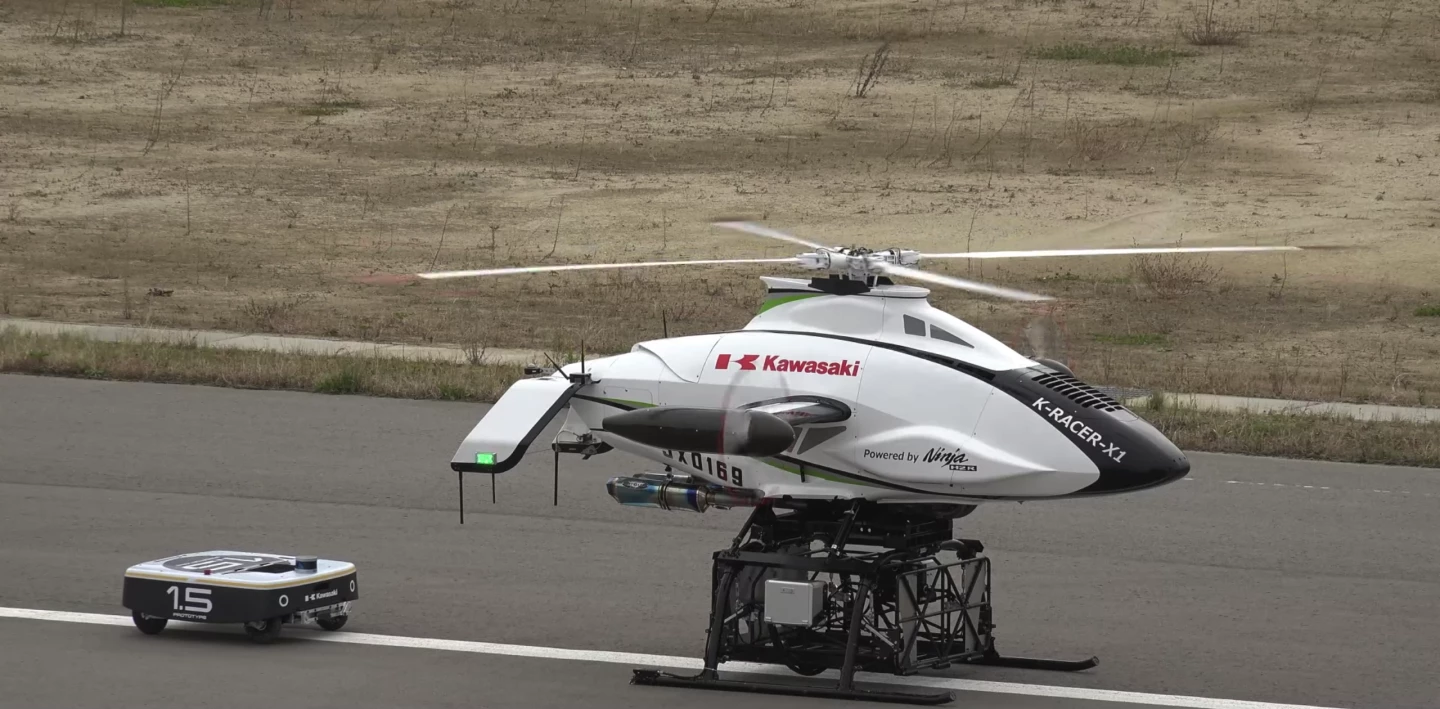Kawasaki has shoehorned the supercharged 1,000cc engine from its wild H2R hyperbike into a heavy-lift autonomous cargo helicopter, and has now demonstrated a robotic system for loading and unloading it without exposing humans to those big blades.
The K-Racer X1 is a beast of a drone, roughly the size of a small car. It rises vertically on a helicopter-style top rotor, but where there's normally a tail rotor to balance out torque, this machine uses two forward-facing props mounted at the end of stubby wings. These props double as forward propulsion, with the wings providing some lift.
Kawasaki is yet to specify how fast this thing will fly, but we doubt it'll be too quick; assuming that top rotor keeps spinning in cruise flight, top speed will be limited by retreating blade stall, which causes asymmetric lift.
In the H2R, that motor produces an impressive 300-odd peak horsepower, so in a sense it's surprising that this drone is only rated for payloads up to 100 kg (220 lb). Running on gasoline, we'd expect this machine to have an epic range capability compared to its electric counterparts – you'd better knock endurance out of the park if you're going to stick with fossil fuels – but no range has been specified as yet.

In video released earlier this month, Kawasaki shows the K-Racer prototype in flight, and tests out an automated delivery robot that handles the first and last bits of a drop on wheels. These are relatively small and rudimentary at the moment, being loaded by hand, then rolling up a ramp to sit in a cage beneath the drone. Kawasaki is working on larger rolling modules that can integrate with other robotic systems in factories and delivery centers so the entire process will eventually be totally autonomously.
Automation is a critical challenge for Japan, which is facing a declining population that's aging faster than anywhere on the planet. An estimated 38 percent of the country was over 60 years old in 2014, and this percentage is set to increase in the coming decades. Robots will need to step in and take over a lot of busywork, and a fully autonomous system that can handle short-to-medium-range logistics operations like the K-Racer could have an important future ahead of it.
Of course, before the skies are filled with these machines, aviation authorities will need to green-light autonomous flights, and next-gen automated airspace management will need to keep things from bumping into one another.
Check out the video below.
Source: Kawasaki







